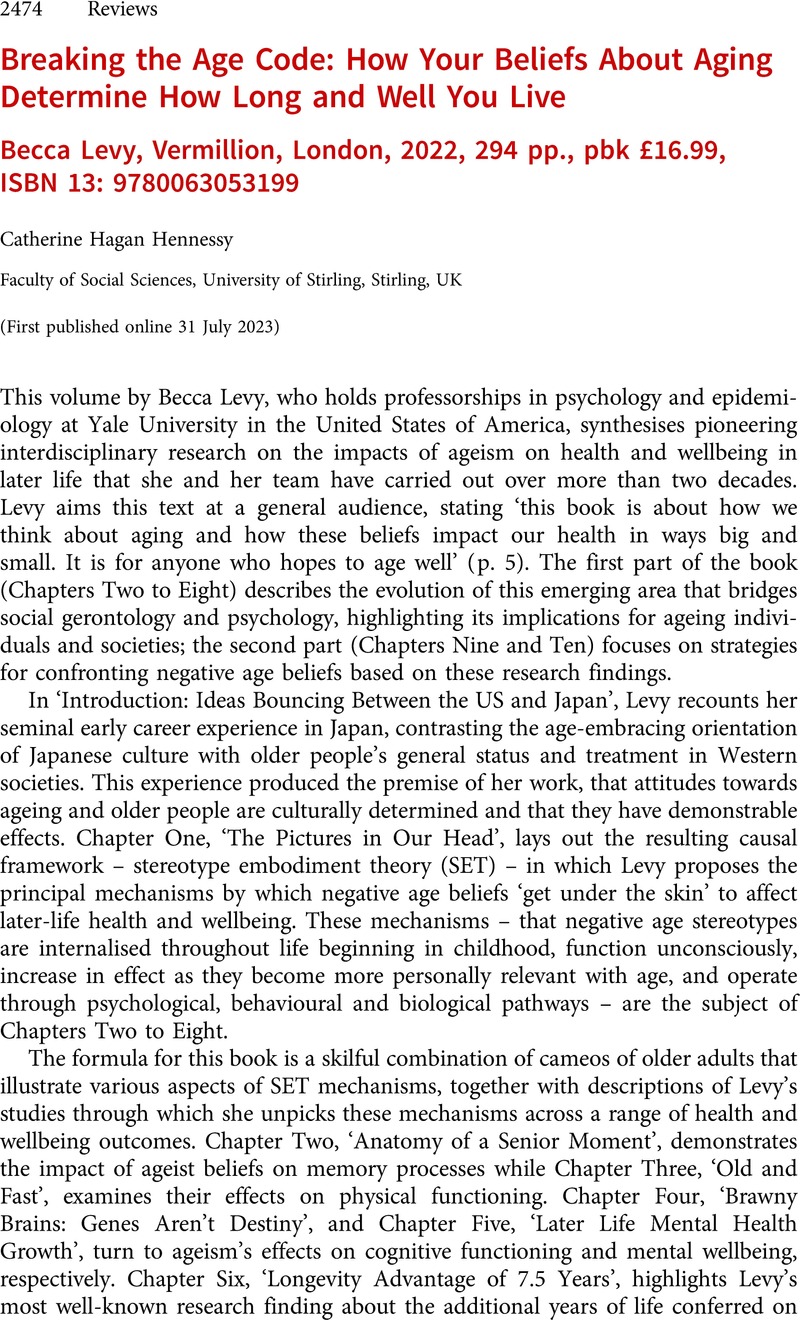No CrossRef data available.
Article contents
Breaking the Age Code: How Your Beliefs About Aging Determine How Long and Well You Live Becca Levy, Vermillion, London, 2022, 294 pp., pbk £16.99, ISBN 13: 9780063053199
Review products
Breaking the Age Code: How Your Beliefs About Aging Determine How Long and Well You Live Becca Levy, Vermillion, London, 2022, 294 pp., pbk £16.99, ISBN 13: 9780063053199
Published online by Cambridge University Press: 31 July 2023
Abstract
An abstract is not available for this content so a preview has been provided. Please use the Get access link above for information on how to access this content.

- Type
- Reviews
- Information
- Copyright
- Copyright © The Author(s), 2023. Published by Cambridge University Press
References
Snowdon, D (2002) Aging with Grace: What the Nun Study Teaches Us About Leading Longer, Healthier and More Meaningful Lives. New York, NY: Bantam.Google Scholar


